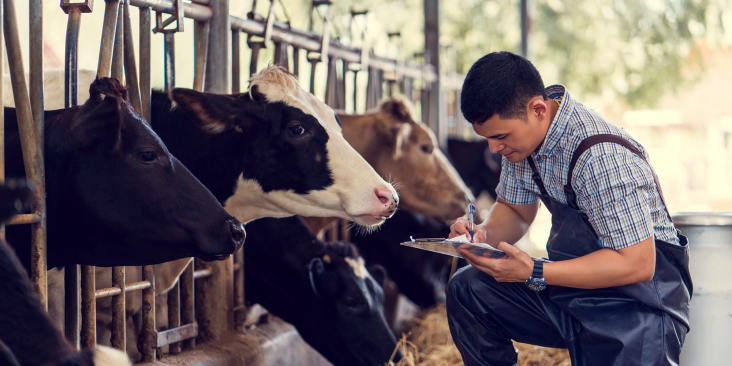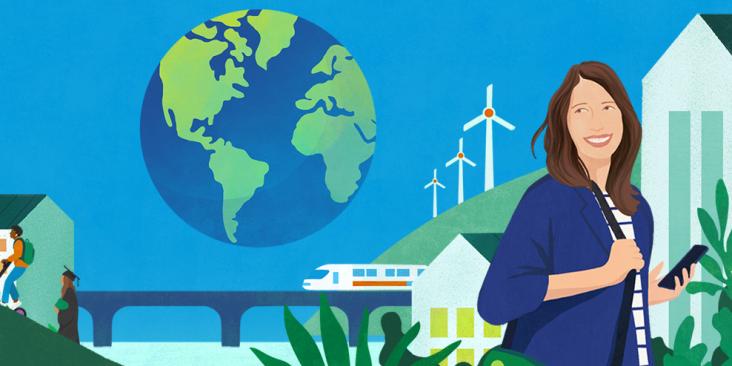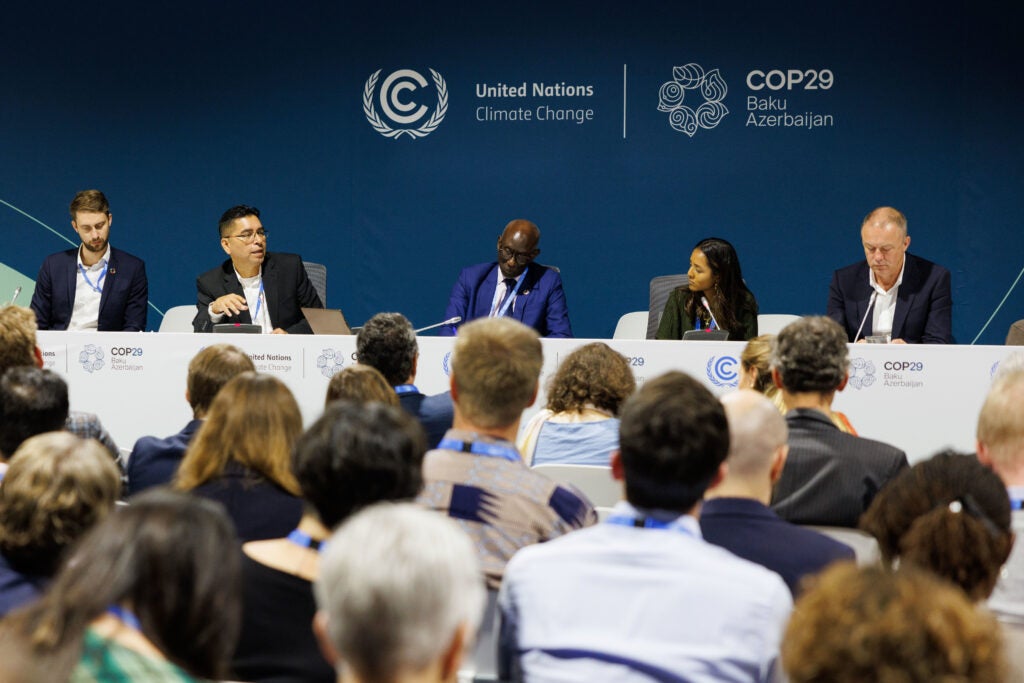This blog was authored by Pedro Martins Barata, Associate Vice President, Carbon Markets and Private Sector Decarbonization and Santiago García Lloré, Senior Manager, IPLC & Conservation Partnerships, Forests
At the start of COP29, negotiators in Baku secured a major breakthrough by agreeing on new standards for a UN-led global carbon market under Article 6 of the Paris Agreement, potentially unlocking billions in funding for climate projects.
But the terms of the standards are still flexible, meaning there’s a real chance to shape them to make sure the money goes where it’s needed most – like Indigenous Peoples and local communities who are fighting to conserve the planet’s last intact forests, known as high forest, low deforestation (HFLD) regions.
The stakes are higher now than ever, especially after the recent US election, which casts doubt on future public climate funding from one of the world’s biggest economies. In this uncertain landscape, carbon markets must step up to fund critical climate solutions, especially nature-based projects like forest conservation.
What is Article 6, and Why it Matters for Climate Action
Although “Article 6” may sound like a footnote in a complex treaty, it holds enormous potential. It’s a framework for countries to collaborate on climate goals, creating flexible pathways to reduce emissions. Our Article 6 fact sheet details how it works. Here’s how it breaks down:
- Article 6.2 provides a structure for countries to bilaterally transfer emission reductions, allowing them to work together while preventing double-counting. Countries like Switzerland, Peru, and Ghana have already piloted these partnerships.
- Article 6.4 establishes a centralized, UN-supervised system for trading carbon credits generated by projects.
- Article 6.8 opens the door for non-market approaches, encouraging cooperation beyond credit trading.
The latest updates from Baku on Article 6 are promising. The new 6.4 rules are set to make international carbon markets more trustworthy, ensuring that emissions cuts are real, measurable, and verifiable. Now, the focus will be on finalizing agreements for Article 6.2 and the remaining terms of these 6.4 standards in 2025, which could help turn Article 6 into a powerful tool for driving global climate action if done right.
Mobilizing Carbon Market Finance for the Frontlines of Climate Action
The need to mobilize robust, quality finance for developing nations is clear: Indigenous Peoples and local communities steward over a third of the world’s forests, yet receive less than 1% of global climate finance. Climate-vulnerable communities cannot afford to wait. They depend on critical funding to safeguard their lands and livelihoods while supporting global climate goals. Carbon markets can help meet this need by creating incentives for forest protection and other emissions-reducing projects, ensuring that both local communities and the environment benefit.
Forest-rich HFLD regions play an outsized role in climate stability by sequestering vast amounts of carbon. However, without urgent financial support, these areas are at risk. Many of the world’s last intact forests are located in HFLD regions, where historically low deforestation rates are now threatened by increasing pressures. HFLD credits under Article 6 could direct much-needed resources to these critical areas, supporting local communities and governments in preventive conservation efforts before deforestation rates rise.
High-Quality Carbon Market Finance Needed Now More than Ever
With climate action hanging in the balance, it’s crucial that finance is timely, strategic, and focused where it can make the greatest impact. Carbon markets have the potential to drive emissions reductions and mobilize investment to where it’s needed most.
The finalization of Article 6 texts at COP29 will be a big step forward. As negotiators work to finalize Article 6.4 standards, it will be critical to ensure nature-based solutions – and the communities that protect these resources – aren’t left out in the fine print. Whether it’s including realistic conditions for ongoing monitoring or fair provisions for nature-based projects, these sticking points matter. Just as importantly, Indigenous Peoples and local communities must have a strong voice throughout the process to ensure climate justice and social safeguards are built into standards.
The decisions made at COP29 will shape the future of carbon markets and climate finance. With smart action now, Article 6 can transform carbon markets from a concept into a catalyst for real climate resilience.










